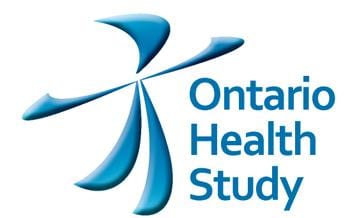The researchers behind one of the most ambitious health studies in history are reaching out to Ontario’s lesbian, gay, bisexual and trans population.
Starting on May 28, a new series of questions aimed specifically at queer participants will be added to the Ontario Health Study questionnaire. It will make the study one of the first of its size to court queer respondents.
“There is virtually no significant Canadian data on the LGBT community, particularly as it relates to health, prevention and management of chronic diseases,” says professor Lyle Palmer, the study’s executive scientific director. Palmer hopes the study will provide “the first evidence base for decisions related to LGBT health,” eventually leading to targeted health promotion and intervention efforts and more effective health policy and spending.
Launched in 2010 and designed to continue indefinitely, the Ontario Health Study has already surveyed more than 200,000 participants. Researchers say they hope the study will grow to include at least one million people. At that size, says Palmer, it “will unquestionably be the largest health study ever undertaken in the world and a major cornerstone of international biomedical research.”
Participants register by filling out an online questionnaire on their health and lifestyles, then are asked to complete annual updates for the rest of their lives. They are also asked to attend local assessment centres to provide physical measurements as well as blood and urine samples for testing.
With such a huge breadth of data, says Palmer, researchers will find new insight into the risk factors for common diseases such as cancer and heart disease. Ontario, he says, is an ideal location for the study.
“The depth of world-class research and clinical expertise in the province . . . and the large size of the resident population are all factors that predicate the success of this project,” says Palmer, who moved to Ontario from Australia in 2010 to head up the study. “The cultural and ethnic diversity [in Ontario] are also important elements in considering feasibility and likely impact.”
But for all Ontario’s diversity, the first version of the study ignored the queer community altogether. Bruce Bursey is a former chair of the Ottawa GLBT Wellness Project, the first health study in any major Canadian city to target lesbian, gay, bisexual and trans participants exclusively. Launched in 2000, that study attracted more than 825 participants from across the region, exposing problems in healthcare for queer people.
“For the first time it provided substantiated evidence of service gaps,” Bursey says. Armed with real evidence – the kind bureaucrats use to make spending decisions – researchers made a slew of recommendations that soon became policy. In the years since, says Bursey, local health centres have prioritized the queer community. A new homeless shelter for young men has been built, services for queer youth and their parents have been expanded, and a buddy group has been established for gay seniors with cancer. And that’s just the beginning.
When Bursey heard on the radio about the Ontario Health Study in the fall of 2010, he signed up that same day.
“As I was completing the survey I learned to my surprise and disappointment, unlike for other demographic groups, it did not ask any questions to determine the sexual orientation and gender identity,” he says. “Without these basic demographic details the study would not have a pink lens through which to view the needs of LGBT people and their families. It would not be of the same benefit to LGBT residents of Ontario as it would to all other groups.”
Bursey called Palmer, again that same day, and within weeks the Ontario Health Study was amended to include questions about sexuality. The latest batch of questions, meanwhile, was added after Rainbow Health Ontario complained about “significant problems . . . particularly for trans people.
“For example, trans men were being asked about their prostate exam,” says Rainbow Health spokesperson Donna Turner. The organization met with Health Study researchers in January to suggest a range of changes. Having passed through the review process, those changes will be ready to go live at the end of May. Palmer hopes the queer community responds in droves.
“Our goal is to recruit at least 10 percent of the adult population of Ontario,” he says. “So we would like at least a 10 percent sample of the LGBT community, too.”

 Why you can trust Xtra
Why you can trust Xtra


